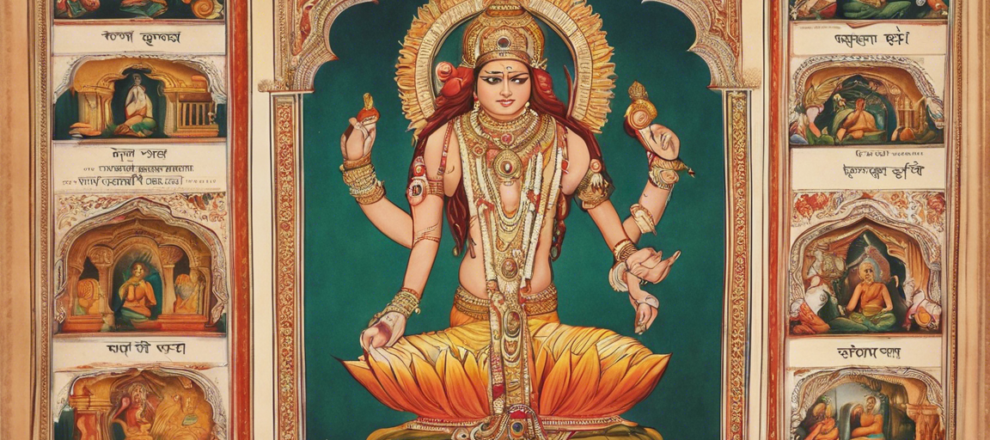Hindi, one of the most widely spoken languages in the world, boasts a rich literary tradition and a unique script known as “Varnmala.” Varnmala, which literally means “garland of letters,” is the Hindi alphabet that consists of 13 vowels and 33 consonants. In this comprehensive guide, we will delve into the intricacies of the Hindi alphabet, its origin, pronunciation, and significance. Let’s embark on a fascinating journey through the enchanting world of Varnmala.
The Origins of Varnmala
The Hindi alphabet, Varnmala, has its roots in the ancient Brahmi script, which was used in India around the 3rd century BCE. Over time, various modifications led to the evolution of different regional scripts, with Devanagari emerging as the standard script for Hindi and several other Indian languages. Devanagari, meaning “divine city,” is a script that is both phonetic and syllabic and is used to write Hindi, Sanskrit, Marathi, Nepali, and other languages.
The Structure of Varnmala
Varnmala comprises 13 vowels and 33 consonants, totaling 46 primary characters. In addition to these, there are 11 compound consonants known as “conjuncts” or “half consonants,” formed by combining a consonant with the inherent vowel ‘a’. This versatile structure allows for the representation of a wide range of sounds and enables the precise articulation of words.
Vowels in Varnmala
- Svar: The vowels in Hindi are known as “Svar,” and there are 13 vowels in Varnmala.
- Short Vowels: The short vowels in Hindi are ‘अ’ (a), ‘इ’ (i), ‘उ’ (u), ‘ए’ (e), and ‘ओ’ (o).
- Long Vowels: The long vowels in Hindi are ‘आ’ (aa), ‘ई’ (ii), ‘ऊ’ (uu), ‘ए’ (e), and ‘ओ’ (o).
- Diphthongs: In addition to these, there are two diphthongs in Hindi: ‘ऐ’ (ai) and ‘औ’ (au).
Consonants in Varnmala
- Vyanjan: The consonants in Hindi are known as “Vyanjan.”
- Vyanjan Sankhya: There are a total of 33 consonants in Varnmala.
- Voiced and Voiceless: The consonants are categorized as either voiced or voiceless, and each has its unique pronunciation.
- Guttural, Palatal, Retroflex, Dental, and Labial: The consonants are further classified based on the point of articulation, leading to specific sounds.
Pronunciation and Transliteration
The pronunciation of Hindi words written in Varnmala can be a challenge for beginners due to the unique sounds of some letters. It is essential to practice regularly and listen to native speakers to improve your pronunciation. Transliteration, the process of converting Hindi script into Roman script, can aid in understanding and pronunciation for non-native speakers.
Importance of Varnmala
Varnmala plays a crucial role in preserving the cultural and linguistic heritage of Hindi-speaking communities. It serves as a link to ancient Indian scripts and enables the transmission of knowledge through literature, art, and education. Understanding Varnmala opens doors to the rich literary treasures of Hindi literature, from ancient texts to modern poetry and prose.
Tips for Learning Varnmala
- Practice Regularly: Consistent practice is key to mastering Varnmala.
- Listen and Repeat: Listening to native speakers and repeating after them can improve pronunciation.
- Use Flashcards: Creating flashcards with Hindi letters and practicing their pronunciation can be helpful.
- Join Language Classes: Enrolling in Hindi language classes or finding online resources can provide structured learning.
- Immerse Yourself: Surrounding yourself with Hindi speakers, music, and movies can help you immerse in the language.
Frequently Asked Questions (FAQs) about Varnmala:
- What is the significance of Varnmala in Hindi language learning?
-
Varnmala forms the foundation of Hindi language learning, as it encompasses all the sounds used in the language and paves the way for reading, writing, and speaking effectively.
-
Are there any online resources available for learning Varnmala?
-
Yes, there are numerous websites, apps, and online courses dedicated to teaching Varnmala and Hindi language basics.
-
How can one differentiate between similar-looking letters in Varnmala?
-
Paying attention to the diacritics (matras) added to the letters can help differentiate between similar-looking letters in Varnmala.
-
Is Varnmala used only in Hindi, or does it apply to other Indian languages as well?
-
While Varnmala is primarily used for Hindi, it is also utilized in other Indian languages like Sanskrit, Marathi, and Nepali that are written in the Devanagari script.
-
Why is Varnmala considered a phonetic script?
- Varnmala is considered phonetic because each letter represents a unique sound, making it easier for learners to understand pronunciation and articulate words accurately.
In conclusion, Varnmala, the Hindi alphabet, is not just a collection of letters but a reflection of a rich cultural heritage and linguistic diversity. By exploring the nuances of Varnmala, learners can unlock the treasure trove of Hindi literature, connect with native speakers on a deeper level, and appreciate the beauty of this enchanting language. Embrace Varnmala as a gateway to a world of knowledge, expression, and creativity in the realm of Hindi language and literature.
